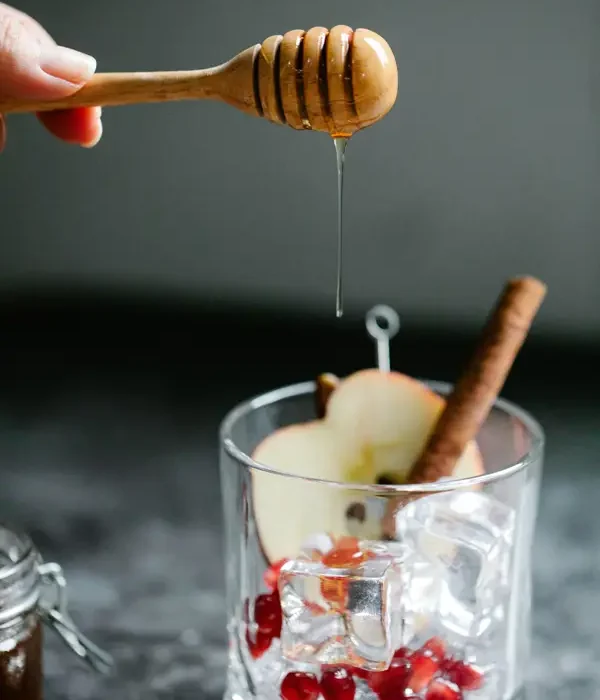For centuries, apple cider vinegar (ACV) has transcended its humble beginnings as a byproduct of apple juice production to become a staple in kitchens and medicine cabinets worldwide. Its origins are shrouded in the mists of time, with evidence suggesting its use dating back to ancient Babylon, around 5000 BC. Ancient Greeks and Romans documented its medicinal properties, employing it for everything from cleaning wounds to treating digestive issues. The fermentation process, the cornerstone of ACV production, was likely discovered accidentally, as naturally occurring yeasts and bacteria transformed sweet apple juice into a tangy, acidic elixir. This process, involving both alcoholic and acetic acid fermentation, is what gives ACV its characteristic sharp flavor and purported health benefits.
Throughout history, ACV has held significant cultural importance. In many cultures, it was (and still is) considered a powerful home remedy, a testament to its perceived efficacy and accessibility. Its use spread across continents, woven into the fabric of various traditional medicine systems. While the scientific community continues to investigate its full potential, a growing body of research supports some of its traditional applications. For instance, anecdotal evidence and some studies suggest ACV may aid in weight management, blood sugar regulation, and even improved skin health. However, it’s crucial to remember that these are potential benefits, and further research is needed to confirm these effects definitively.
Today, the global apple cider vinegar market is booming, reflecting a surge in interest in natural health remedies and functional foods. Reports estimate the market to be worth billions of dollars and growing at a significant annual rate. This popularity is fueled by readily available information online, increased awareness of its purported benefits, and a general shift towards more natural and holistic approaches to wellness. While many enjoy it in its simplest form, diluted with water, ACV’s versatility shines through in its countless culinary and beverage applications. This guide will explore the art of crafting the perfect apple cider vinegar drink, providing insights into choosing the right ACV, mastering the ideal dilution ratio, and adding complementary ingredients to create a refreshing and potentially beneficial beverage.
Ingredients and Measurements
Creating the perfect apple cider vinegar (ACV) drink involves careful consideration of ingredients and their proportions. The base, of course, is apple cider vinegar itself. The quality of your ACV significantly impacts the final taste and health benefits. Look for unfiltered, raw, organic apple cider vinegar with mother – the cloudy sediment containing beneficial probiotics. Avoid overly processed or pasteurized varieties, as these often lack the beneficial enzymes and bacteria.
For a standard 8-ounce serving, we recommend starting with 1-2 tablespoons of raw, unfiltered apple cider vinegar. This amount provides a noticeable tang without being overwhelmingly sour. You can adjust this quantity to your preference; some individuals prefer a stronger vinegar taste, while others prefer a milder one. Begin with the lower amount (1 tablespoon) and gradually increase until you find your ideal level of tartness.
Next, we need a liquid base to dilute the vinegar. Water is the most common and recommended choice. Use filtered or spring water for the best taste and to avoid any potential off-flavors from tap water. For an 8-ounce serving, we suggest using approximately 6-7 ounces of water. This will create a refreshing drink that is not too diluted, yet pleasant to consume.
Now, let’s move on to enhancing the flavor profile. Honey is a popular choice for adding sweetness and balancing the acidity of the ACV. The amount of honey depends entirely on your personal preference and the sweetness of your chosen honey. Start with 1 teaspoon of honey and adjust according to your taste. Raw, unfiltered honey is preferred for its additional health benefits and complex flavor profile. You can experiment with different types of honey to find your favorite combination.
Other flavor enhancers can be added to personalize your ACV drink. A squeeze of fresh lemon juice (about ½ a lemon) brightens the flavor and adds a vitamin C boost. A small piece of fresh ginger (about 1 inch, finely grated) can provide a spicy kick and anti-inflammatory benefits. Cinnamon (a ½ teaspoon of ground cinnamon or a small cinnamon stick) adds warmth and complements the apple cider vinegar beautifully. Remember to adjust these quantities to your taste preferences. Experiment with different combinations to find your signature ACV drink.
Important Note: Always start with smaller quantities of all ingredients and gradually adjust until you achieve your desired taste. This allows you to control the level of tartness, sweetness, and spiciness. If you are new to drinking apple cider vinegar, it’s advisable to start with a diluted version and gradually increase the concentration as you get accustomed to the taste.
Disclaimer: While apple cider vinegar offers potential health benefits, it’s crucial to consult with your doctor before incorporating it into your diet, especially if you have any underlying health conditions or are taking medication.
Equipment and Utensils
Creating the perfect apple cider vinegar (ACV) drink requires the right tools to ensure accurate measurements, efficient mixing, and a pleasant drinking experience. While the basic recipe is simple, having the correct equipment elevates the process and the final product.
Measuring Utensils: Precision is key when working with ACV drinks, especially if you’re following a specific recipe or adjusting ingredients to your taste. A liquid measuring cup (at least 2-cup capacity) is essential for accurately measuring your apple cider vinegar, water, and any added liquid sweeteners. A set of measuring spoons (1 teaspoon, 1/2 teaspoon, 1/4 teaspoon) will be necessary for smaller quantities of ingredients like spices, extracts, or powdered sweeteners. Digital kitchen scales are highly recommended for more precise measurements, particularly when using ingredients like honey or maple syrup where volume can vary significantly.
Mixing Vessels: The vessel you choose for mixing your drink will influence the overall process and the final presentation. A large glass mixing bowl (at least 4-cup capacity) provides ample space for stirring and incorporating all ingredients thoroughly. If you prefer to mix directly in your serving glass, choose a tall, narrow glass (16-20 ounces) to easily stir and avoid spillage. A sturdy whisk is ideal for thoroughly combining ingredients and preventing clumping, especially when using honey or other thickeners. Alternatively, a fork or spoon can be used, but a whisk provides more effective mixing.
Serving Vessels: The type of glass you use for serving your ACV drink can enhance the overall experience. Tall, slender glasses are aesthetically pleasing and allow you to appreciate the drink’s color and clarity. Mason jars are another excellent option, providing a rustic and charming presentation. Consider the size of your serving glass based on the quantity you’re preparing. For larger batches, a pitcher or carafe is recommended for storing and serving.
Optional Equipment: Depending on your recipe and preferences, certain optional equipment might enhance your drink-making process. A juicer is helpful if you’re incorporating fresh fruits or vegetables. A blender is useful if you want a smoother, more consistent texture in your drink, especially when using ingredients like berries or ginger. A strainer or fine-mesh sieve might be needed if you are using ingredients that require straining, such as herbs or spices.
Cleaning and Sanitation: Maintaining cleanliness is crucial in food preparation. Wash all your equipment thoroughly with warm, soapy water before and after use. For a more thorough sanitation, you can rinse your equipment with a solution of white vinegar and water. Proper cleaning prevents cross-contamination and ensures the safety and quality of your ACV drink.
Professional Recommendation: Invest in high-quality measuring tools for consistent and accurate results. A good whisk can significantly improve the mixing process, ensuring a well-combined and flavorful drink. Choose glassware that complements your drink and enhances the overall enjoyment.
Preparation of Ingredients (Washing, Chopping etc.)
Before embarking on the creation of your perfect apple cider vinegar drink, meticulous preparation of ingredients is paramount. This ensures both the safety and the optimal flavor profile of your final concoction. We’ll focus on the key components: apple cider vinegar, honey (or your chosen sweetener), and any optional additions like fruit or spices.
Washing the Apple Cider Vinegar is not necessary. Apple cider vinegar is already a fermented product, and washing it would be counterproductive. However, always check the bottle for any sediment or unusual cloudiness. If present, gently swirl the bottle to redistribute the sediment before pouring.
Honey preparation is equally straightforward. The quality of your honey significantly impacts the taste of your drink. Choose a raw, unfiltered honey whenever possible for its richer flavor and potential health benefits. For a standard 8-ounce serving of apple cider vinegar drink, you’ll typically require 1-2 tablespoons of honey, depending on your preferred sweetness level. Begin by inspecting the honey for any crystallization. If crystallized, gently warm the jar in a bowl of warm water, avoiding direct heat, to liquefy it. Do not overheat, as this can damage the honey’s delicate enzymes and flavor compounds.
Now, let’s consider optional ingredients. Adding fresh fruit can elevate your drink’s flavor profile and provide added nutrients. For example, a common addition is lemon or lime. If using citrus fruits, thoroughly wash them under cold running water for at least 30 seconds, scrubbing gently with your fingers or a soft brush to remove any pesticides or wax residue. Then, slice the fruit into wedges or thin rounds. For a standard 8-ounce serving, one to two thin lemon or lime slices are sufficient. Avoid overdoing it, as excessive citrus can overpower the delicate apple cider vinegar flavor.
If incorporating spices, such as cinnamon sticks or ginger, proper preparation is key. Cinnamon sticks should be washed and gently scrubbed to eliminate any potential dirt or debris. For a standard serving, a 1-inch piece of cinnamon stick is a good starting point. If using fresh ginger, peel a 1-inch piece using a spoon or vegetable peeler. Finely chop or grate the ginger, ensuring even distribution throughout your drink. Remember that spices can be potent, so start with smaller quantities and adjust to your taste preference. You can always add more, but you can’t take it away!
Finally, always maintain hygiene throughout the preparation process. Wash your hands thoroughly before handling any ingredients, and use clean utensils and glassware. This simple step ensures a safe and enjoyable drinking experience, free from any unwanted contamination.
Once all your ingredients are meticulously prepared and measured, you are ready to proceed to the next step of creating your perfect apple cider vinegar drink.
Mixing and Combining Ingredients
Creating the perfect apple cider vinegar (ACV) drink involves more than just pouring vinegar into water. The success of your drink hinges on the careful mixing and combining of ingredients to achieve the desired taste and texture. This section outlines the process, providing practical advice and professional recommendations to guide you.
Start with the base: water. Use filtered or spring water for the best taste. Tap water can sometimes contain minerals that clash with the ACV’s flavor profile. Aim for approximately 8 ounces (240ml) of water as a starting point. You can adjust this amount to your preference, increasing or decreasing based on how strong you want your drink to be. Remember, you can always add more water, but you can’t take it away!
Introducing the apple cider vinegar: The amount of ACV you add is crucial. Begin with 1-2 tablespoons (15-30ml) of raw, unfiltered apple cider vinegar. Raw ACV contains the mother, a cloudy substance comprising beneficial bacteria and enzymes. Avoid using filtered or pasteurized ACV, as it lacks these beneficial components. If you find the taste too intense, start with 1 tablespoon and gradually increase until you reach your preferred level of tartness.
Sweetening the deal (optional): Many people find that adding a touch of sweetness balances the acidity of the ACV. Consider using honey, maple syrup, or stevia, depending on your dietary preferences and desired level of sweetness. Start with 1 teaspoon (4g) of your chosen sweetener and add more gradually until you’re satisfied. Over-sweetening can mask the beneficial properties of the ACV. Aim for a subtle sweetness that complements the tartness rather than overpowering it.
Enhancing the flavor: To elevate your ACV drink beyond the basics, experiment with different additions. A squeeze of lemon or lime juice adds a refreshing citrusy note. A small pinch of cinnamon or ginger can provide warmth and spice. Fresh or frozen berries can add sweetness and antioxidants. Remember to add these ingredients gradually, tasting as you go to avoid overwhelming the flavor profile. A few slices of cucumber or a sprig of mint can add a refreshing coolness.
Mixing technique: Once you’ve gathered all your ingredients, gently stir them together in a glass or shaker. Avoid vigorous shaking, as this can create excessive frothing. Gentle stirring ensures even distribution of the ingredients, preventing a separation of liquids and ensuring a consistent taste throughout your drink. If using a shaker, use a gentle swirling motion.
Professional Tip: For a smoother, less acidic drink, consider diluting the ACV with a small amount of water in a separate container before adding it to the rest of the ingredients. This helps to distribute the acidity more evenly and can prevent a harsh, vinegary taste.
Important Note: Always start with smaller quantities of ACV and other ingredients, especially if you’re trying a new recipe. Adjust the amounts according to your taste preferences. Experimentation is key to finding your perfect ACV drink recipe!
Dilution and Taste Adjustment
Diluting apple cider vinegar (ACV) is crucial before consumption. Undiluted ACV is highly acidic and can damage tooth enamel and irritate the throat and stomach lining. Never drink ACV straight. The ideal dilution ratio depends on personal preference and the specific ACV you’re using, as some are more potent than others. A common starting point is a ratio of 1 part ACV to 4 parts water. For example, you might mix 1 tablespoon (15ml) of ACV with 4 tablespoons (60ml) of water.
For a larger volume, you can easily scale this ratio up. For a 16-ounce (473ml) glass of ACV drink, you would use approximately 4 tablespoons (60ml) of ACV and 16 tablespoons (240ml) of water. Always start with a smaller amount of ACV and gradually increase it to your liking. It’s much easier to add more ACV than to remove it if it’s too strong.
The type of water you use can also affect the taste. Filtered water is generally recommended to avoid any off-flavors that might be imparted by tap water. Spring water or even sparkling water can be used to add a bit of fizz and complexity to your drink. Experiment to find what you enjoy most.
Beyond simple dilution, taste adjustment is key to creating a truly enjoyable ACV beverage. Many find the sharp, tangy flavor of ACV to be quite intense. Sweeteners can help balance the acidity and create a more palatable drink. Honey is a popular choice, complementing the apple flavor beautifully. Start with a small amount (1 teaspoon) and gradually add more to your liking. Maple syrup or agave nectar can also be used, although their flavors are distinct from honey.
Consider adding other flavor enhancers to further personalize your drink. A squeeze of lemon or lime juice can brighten the flavor profile, while a few slices of fresh apple or cucumber can add a refreshing touch. Fresh or frozen berries, such as blueberries or raspberries, can create a delicious and colorful addition, offering both sweetness and antioxidants. A sprig of mint or a cinnamon stick can provide subtle aromatic notes.
Experimentation is encouraged. Don’t be afraid to try different combinations of sweeteners and flavor enhancers until you find the perfect balance for your palate. Keep a record of your favorite ratios and additions to easily replicate your perfect ACV drink in the future. Remember that the goal is to create a healthy and delicious beverage you’ll enjoy regularly.
Important Note: If you have any underlying health conditions or are taking medication, consult your doctor before incorporating ACV into your diet. While generally safe for consumption when diluted properly, excessive consumption of ACV may have negative effects.
Serving Suggestions
Once you’ve crafted your perfect apple cider vinegar drink, the way you serve it can significantly enhance the experience. Don’t just gulp it down! Consider these serving suggestions to elevate your ACV beverage from a simple tonic to a delightful and refreshing treat.
Temperature Matters: The ideal serving temperature depends on your personal preference and the other ingredients in your drink. For a refreshing summer beverage, serve your ACV drink chilled, ideally between 35-45°F (2-7°C). Allow the drink to chill thoroughly in the refrigerator for at least 30 minutes before serving. For a warming winter drink, consider serving it at room temperature or even slightly warmed, but avoid excessive heat which can diminish the beneficial properties of the vinegar.
Enhance with Garnishes: A simple garnish can transform your ACV drink from ordinary to extraordinary. A few fresh mint leaves add a cooling, herbaceous note that complements the tartness of the vinegar. A thinly sliced cucumber ribbon provides a refreshing crunch and subtle sweetness. For a more visually appealing drink, consider using edible flowers like pansies or nasturtiums. Remember to wash all garnishes thoroughly before adding them to your drink.
Presentation is Key: The way you present your drink influences the overall sensory experience. Serve your ACV drink in a tall, elegant glass to enhance its visual appeal. If using ice, opt for larger, clear ice cubes to prevent rapid dilution. A simple straw can also add a touch of sophistication. For a more rustic feel, serve in a mason jar with a cloth napkin.
Accompanying Foods: Consider pairing your ACV drink with complementary foods. If your drink is on the sweeter side, a savory snack like crackers or cheese can provide a delightful contrast. A lighter, more tart ACV drink might pair well with a fresh fruit salad or a light salad with a vinaigrette dressing. Avoid pairing your ACV drink with highly acidic foods, as this can exacerbate stomach discomfort.
Quantity and Timing: It’s crucial to remember moderation. While apple cider vinegar offers potential health benefits, consuming excessive amounts can be detrimental. Start with a small serving (around 1-2 ounces of apple cider vinegar diluted in a larger volume of water or juice) and gradually increase the quantity as needed, always listening to your body. The optimal time to consume your ACV drink is typically in the morning, on an empty stomach, or before a meal to potentially aid digestion. However, personal preferences may vary.
Experiment and Customize: Don’t be afraid to experiment with different serving methods to find what works best for you. Try adding a splash of sparkling water for added fizz, or a squeeze of lemon or lime for extra zing. The beauty of creating your own ACV drink lies in its versatility – feel free to adjust the recipe and serving suggestions to suit your taste preferences and dietary needs. Remember to always start with a small amount of apple cider vinegar and gradually increase the quantity as tolerated.
Recommendations for the Perfect Apple Cider Vinegar Drink
To maximize the health benefits and deliciousness of your apple cider vinegar drink, consider these recommendations. Remember that the taste and effects can vary depending on the brand of apple cider vinegar and the added ingredients. Experiment to find your perfect balance.
Serving Suggestions: For a refreshing daytime beverage, serve your apple cider vinegar drink chilled over ice. A splash of sparkling water can add a delightful fizz. For a warmer option, consider gently heating the drink—avoid boiling, as this can diminish the beneficial compounds. You can also incorporate it into smoothies for a nutritious boost. Experiment with different garnishes like fresh mint, cucumber slices, or a cinnamon stick for added flavor and visual appeal. A squeeze of lemon or lime can also enhance the tartness and add a vibrant citrus note.
Storage Conditions: Once prepared, your apple cider vinegar drink is best consumed immediately for optimal freshness. However, if you need to store it, transfer it to an airtight container and refrigerate it. Avoid storing it in direct sunlight or at room temperature for extended periods, as this can affect the taste and potentially reduce its potency. Store any leftover drink in the refrigerator for no more than 24 hours.
Complementary Dishes: The slightly acidic nature of apple cider vinegar makes it a fantastic pairing with a variety of dishes. It complements rich, fatty foods, helping to cut through the heaviness. Consider enjoying your apple cider vinegar drink alongside dishes like grilled salmon, roasted vegetables, or salads with creamy dressings. The subtle tanginess also pairs well with breakfast foods such as pancakes or oatmeal, adding a unique twist to your morning meal. Avoid consuming it immediately before or after consuming dairy products, as this can interfere with the digestive process.
Nutritional Information (per 100ml, approximate values will vary based on recipe): The nutritional content of your apple cider vinegar drink will greatly depend on the ingredients used. A basic drink consisting of 1 tablespoon of apple cider vinegar and 200ml of water will have minimal calories (approximately 5-10 calories), negligible fat and carbohydrates. It will however, contain small amounts of acetic acid, which is the main active compound in apple cider vinegar, and trace amounts of vitamins and minerals present in the vinegar itself. Adding ingredients like honey or fruit juice will significantly increase the calorie and carbohydrate content. Always check the nutritional information of individual ingredients to accurately calculate the overall nutritional profile of your drink.
Important Note: While apple cider vinegar offers potential health benefits, it’s crucial to consume it in moderation. Excessive consumption can lead to tooth enamel erosion, heartburn, and other digestive issues. Consult your doctor before incorporating apple cider vinegar into your diet, especially if you have any underlying health conditions or are taking medication. Begin with small quantities and gradually increase the amount as your body adjusts.
Disclaimer: The nutritional information provided is an estimate and may vary depending on the specific ingredients used and their quantities. This information is not intended to be a substitute for professional medical advice. Always consult with a healthcare professional before making significant dietary changes.





